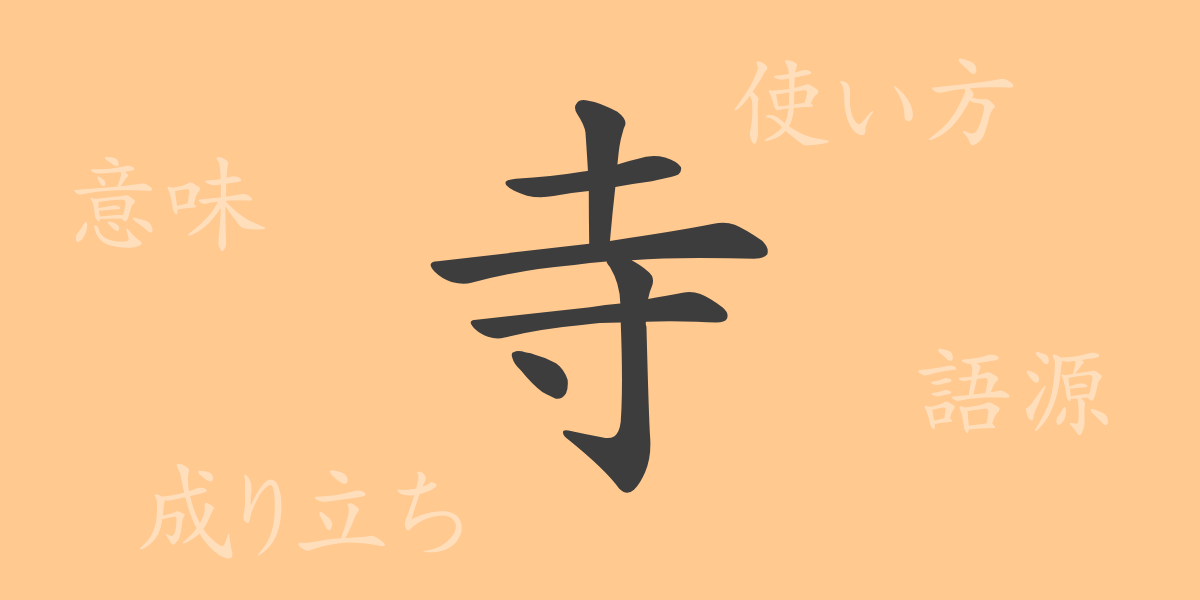The character “寺(てら)” is deeply rooted in Japanese culture and history. This single character embodies more than just a building; it carries spiritual significance and historical weight. In this article, we will delve into the common use kanji “寺(てら),” exploring its origins, meanings, usage, readings, and various idioms and proverbs. This exploration will serve as a key to understanding Japan’s temple culture more deeply.
Origins of 寺(てら) (Etymology)
The kanji “寺(てら)” is derived from the ancient Indian Sanskrit word “Chaitya,” which refers to a sacred place or shrine in Buddhism. It was transmitted through China to Japan, where it became established as a kanji representing Buddhist temples. The character signifies not only the physical structures of Buddhist architecture but also the places of religious practice and devotion.
Meanings and Usage of 寺(てら)
The kanji “寺(てら)” refers to a place where Buddhist teachings are expounded and where monks live. Broadly, it denotes any facility where Buddha is enshrined, and where practices such as study, rituals, and meditation occur. In modern times, its usage extends beyond religious contexts to include public facilities and other buildings. For instance, in the term “学寺(がくじ)” it signifies a place for learning.
Readings, Stroke Count, and Radical of 寺(てら)
The kanji “寺(てら)” is included in the list of 常用漢字(じょうようかんじ) (common use kanji) in Japan, with the following readings and structure:
- Readings: The on’yomi (音読み) is “ジ,” and the kun’yomi (訓読み) is “てら.”
- Stroke count: It consists of 6 strokes.
- Radical: The radical is 宀(うかんむり) (roof).
Idioms, Phrases, and Proverbs Using 寺(てら)
There are numerous idioms, phrases, and proverbs that include the kanji “寺(てら),” each with unique meanings. For example, “寺子屋(てらこや)” refers to early education institutions during the Edo period, and “寺社(じしゃ)” combines temples and shrines, referring to religious facilities in Japan. The proverb “門前の小僧習わぬ経を読む(もんぜんのこぞうならわぬきょうをよむ)” means that one naturally acquires knowledge and skills from their environment.
Conclusion on 寺(てら)
The kanji “寺(てら)” symbolizes more than just buildings; it represents Japanese culture, history, and spirituality. By tracing its origins and evolution to the present day, we can understand the role of temples in Japanese life and values. With the spread of Buddhism, “寺(てら)” has become deeply embedded in Japanese language and daily life, reflecting its significance in various contexts.

























